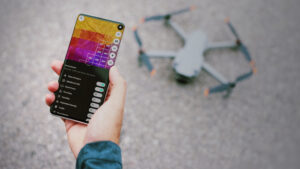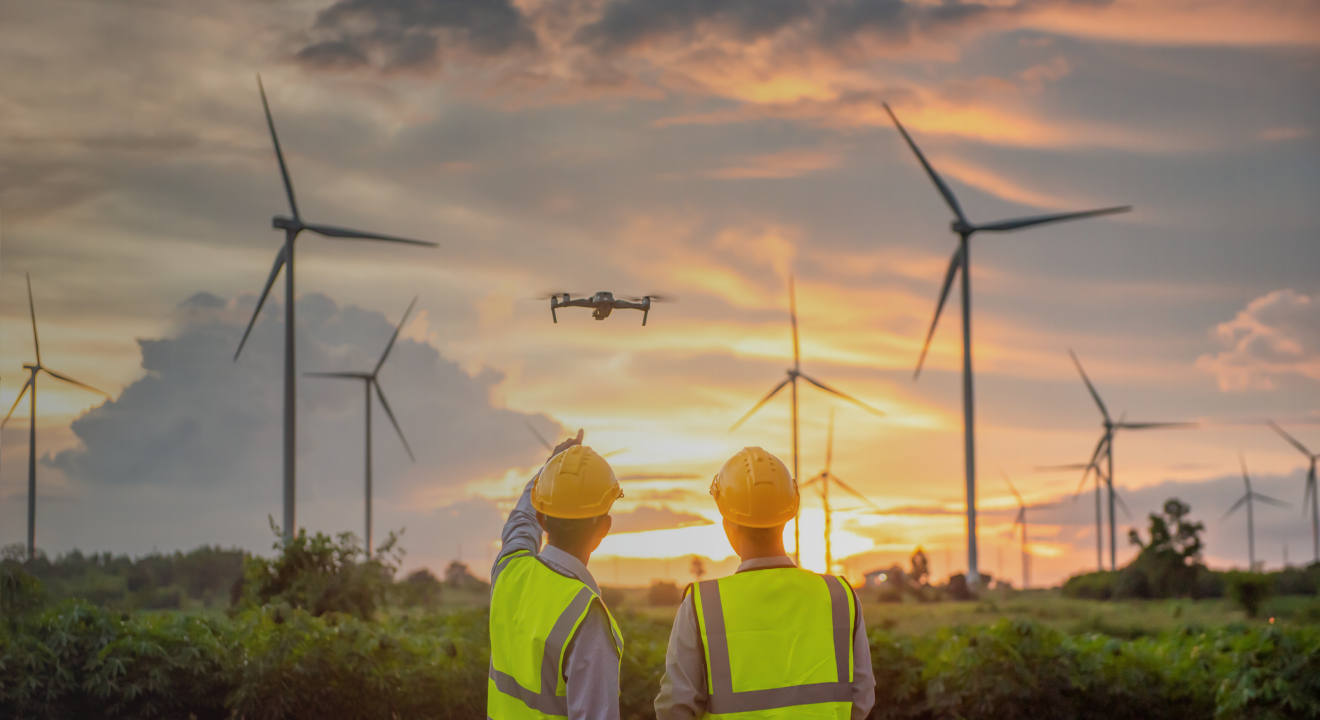In the renewable energy industry, wind turbines are becoming increasingly important for generating power, and are an invaluable resource for both large and small-scale operations. But as with any technology, wind turbines can suffer from wear and tear due to harsh weather conditions, which can affect their performance and efficiency. That’s why it’s important to be able to detect potential damage and take corrective action before it becomes a major issue. One way to do this is by using drones to detect surface damage.
Drones are becoming increasingly popular for a variety of applications, from photography to surveying, and they can be used to detect surface damage on wind turbines. By equipping drones with automated drone flight planning, advanced imaging technology, Artificial Intelligence (AI) and Machine Learning (ML) algorithms, they can be used as an efficient tool for surface damage detection of wind turbines.
In this blog, we’ll discuss the benefits of using drones for surface damage detection and the technology involved in their use.
Drone Automation and Flight Planning
One of the key aspects of using drones for surface damage detection is that it can be done quickly and efficiently with minimal human intervention. This is possible thanks to automated flight planning and navigation software. Automated flight planning software simplifies the process of drone flight planning by allowing operators to specify a flight path, altitude, speed, and other parameters with just a few clicks. This makes it easy to quickly inspect multiple turbines in a single flight without having to manually program each one.
In addition to automated flight planning software, AI and machine learning can be used to further optimize a drone’s flight path by analyzing weather conditions and avoiding obstacles. This allows drones to fly more efficiently while also ensuring that they are able to capture accurate data.
Benefits of Using Drones for Surface Damage Detection
Drones have many benefits over the traditional approaches outlined above, including the elimination of human hazards, a 70% reduction in testing time, and the avoidance of the need to close down windmills for extended periods of time as is necessary with human assessments.
Improved Safety
Drones allow operators to inspect turbines without putting personnel at risk. This is especially important in hazardous conditions such as high winds or extreme temperatures.
Improved safety also means addressing the different functionalities of drones that would address various issues without putting human lives in danger. For instance, when it comes to surface damage detection, there are certain features that you will want to consider when choosing a drone. You will also want to make sure that the drone is equipped with high-quality sensors to detect even the smallest signs of damage on the surface of the turbine. This relieves the human inspection team from the duty of physically accessing sites under challenging conditions.
Increased Cost Savings
Drones can reduce labor costs associated with manual inspections and reduce travel expenses since they can be operated remotely from anywhere in the world. The automated drone flight planning system ensures that the drone follows a pre-defined flight path, enabling it to capture images from all angles and at different heights. This helps to identify potential defects in hard-to-reach areas that may not be visible from the ground. Moreover, the AI and ML algorithms help to identify any anomalies in the data collected by drones, further reducing costly errors.
Minimized Downtime
Drones can quickly detect potential surface damage on wind turbines so that corrective action can be taken before it becomes an issue, helping to minimize downtime and keep operations running smoothly. They can quickly cover a large area and collect high-resolution images of the turbines’ surface. The images can then be analyzed to detect any signs of damage or wear. The systems can be further enhanced with thermal cameras to detect temperature variations in the turbine’s components. The improved accuracy and speed surpass the capabilities of human personnel, eliminating any associated delays.
Conclusion
Drone automation is revolutionizing the way we inspect wind turbines. AI-driven drone solutions are now being used to probe these structures efficiently, ensuring reliability while keeping workers safe from hazardous conditions on-site. This innovative approach not only lessens maintenance costs but also reduces downtime, paving the way for endless possibilities in renewable energy inspection processes. As drone technology continues to advance, we can expect this type of inspection to become even more efficient and reliable in the future.
Discover how SkyGrid is revolutionizing the way surface damage detection for wind turbines is managed. With drones and cutting-edge technology, explore what makes this process a safer reality by visiting us now!


